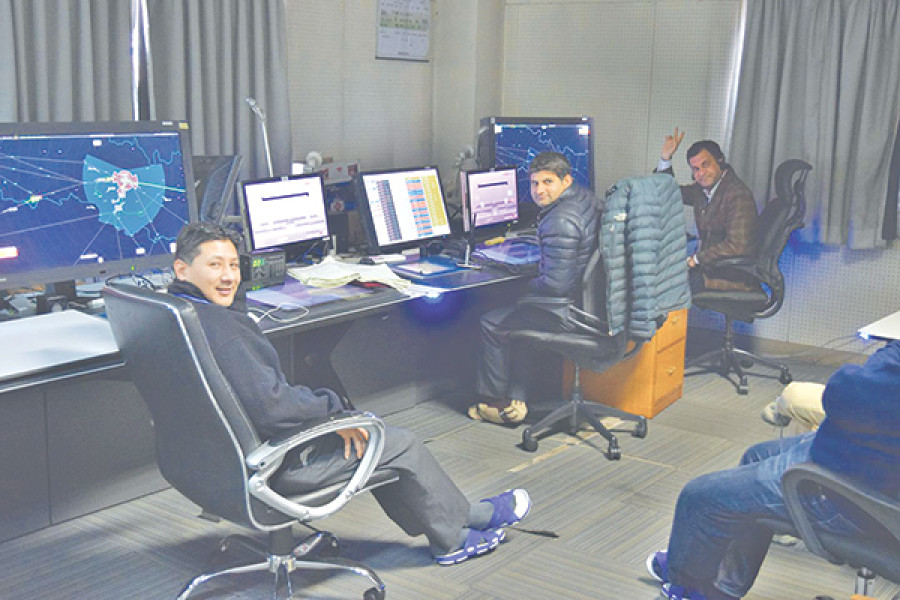Money
Nepal-India air route talks: India makes U-turn
Nepal’s request for India to grant air entry points from the L626 route in Mahendranagar and Nepalgunj has suffered a setback as the southern neighbour has apparently denied it, multiple sources at the Civil Aviation Authority of Nepal (Caan) said.
Sangam Prasain
Nepal’s request for India to grant air entry points from the L626 route in Mahendranagar and Nepalgunj has suffered a setback as the southern neighbour has apparently denied it, multiple sources at the Civil Aviation Authority of Nepal (Caan) said.
A technical delegation, who was in the Indian capital of New Delhi on Thursday to continue the air routes talks started last June, informed the Caan’s management on Sunday that India
had made a “U-turn” on the two vital air entry points after having initially agreed to it.
Caan’s Director General Sanjiv Gautam refused to talk on the issue. The Nepali delegation that held talks with officials of the Airport Authority of India (AAI) was led by Deepak Baral, director of air traffic management at Caan. “The talks were confusing and disappointing,” a source privy to the matter said. The entry point from Nepalgunj was “denied” for “defence” issue while entry for high-level flights (flights above 24,000 feet) from the L626 route in Mahendranagar was “denied” for heavy traffic in the Indian airspace, the sources said.
“It seems that the issue will not be sorted out at the technical level and hence it will require a political level intervention,” they said. Some officials suspect that the India move could be a repercussion of Nepal’s decision to
withdraw from the first-ever joint military exercise among the Bay of Bengal Initiative for Multi-Sectoral Technical and Economic Cooperation (BIMSTEC) member states in Pune, India last month. India had “unofficially” expressed its unhappiness over Nepal’s decision.
Some officials said India could use these routes as a “bargaining chip” to force Nepal to use its advanced navigational satellite programme — GPS-Aided Geo Augmented Navigation (GAGAN). India has been lobbying member countries of the South Asian Association for Regional Cooperation (SAARC) including Nepal to join its GAGAN project-for better management of air traffic in the Indian subcontinent. Nepal is yet to reach a decision regarding India’s proposal.
The Nepali delegation was given a full mandate to negotiate on every aspect of routes and sign an agreement on Caan’s behalf if necessary. The response from the Indian side, however, was not positive as they indicated the issues were out of their hands and had to be decided by people of “higher authority”, said the Caan’s sources.
Last June, India agreed to open four new air entry points to Nepal in the eastern and western parts of the country to facilitate movement of international traffic, but two ‘vital entry points’ remained on hold due to technical issues.
The four routes that India agreed to make bidirectional or two-way are Kathmandu- Biratnagar-Dhaka, Kathmandu-Janakpur-Kolkata and Kathmandu-Janakpur-Patna in the eastern part of Nepal, and Kathmandu-Mahendranagar-Delhi (L626) in the west.
With regard to Nepal’s request for entry from the L626 route and Nepalgunj, India said it would make further examinations by September. The Indian side in the past expressed reservations over providing entry over Bhairahawa and Nepalgunj as a defence establishment is located in Gorakhpur where fighter jet exercises are held regularly.
The upcoming international airports in Bhairahawa and Pokhara will not be financially and technically feasible unless India allows aircraft to enter Nepal through the Nepalgunj or Mahendranagar airspaces, according to the Tourism Ministry assessment.
For example, if an international flight headed for Gautam Buddha International Airport in Bhairahawa from western Nepal or New Delhi is not allowed to use the airspace over Bhairahawa, Nepalgunj or Mahendranagar, it will have to fly an extra 300 km to land at the airport, according to ministry documents.
This means an aircraft coming from western Nepal will first have to fly to Simara before making a U-turn and landing at Bhairahawa. The plane will pass by Bhairahawa as it flies through Indian airspace to Simara, and then turn west after entering Nepali airspace.
The roundabout route that the aircraft bound for Gautam Buddha International Airport will have to take, will raise the operating costs of airlines and make the flight costly. The airport is expected to come into operation by September 2019.
The international airport in Pokhara, which is expected to be completed by mid-2021, will face a similar problem if the new cross-border air routes do not come into operation soon. The ministry’s documents show that Pokhara-bound flights from western Nepal will have to fly an additional 185 km if the new cross-border air routes are not opened.
Cross-border airspace issues have been pending for the last five years. Nepal formally asked India to open the new cross-border air routes during Indian Prime Minister Narendra Modi’s visit to Kathmandu in 2014. The issue of new air routes was also on the agenda during the Indian premier’s visit to Nepal last May.
Nepal has been pushing the agenda of new routes for the last nine years, as there exists a single entry point in Simara for most of the airlines flying into the country. In contrast, there are seven exit points for aircraft flying out of Nepal: Bhairahawa and Mahendranagar in the west; and Simara, Biratnagar, Tumlingtar, Kakarbhitta and Janakpur in the east.
Besides Simara, two other entry points over Mechi and Tumlingtar (over Everest) have been specifically designated for flights coming from Bhutan and Lhasa, respectively. The Simara entry point is used by a majority of aircraft flying into Nepal and is, therefore, congested most of the time.




 17.05°C Kathmandu
17.05°C Kathmandu













.jpg&w=300&height=200)

